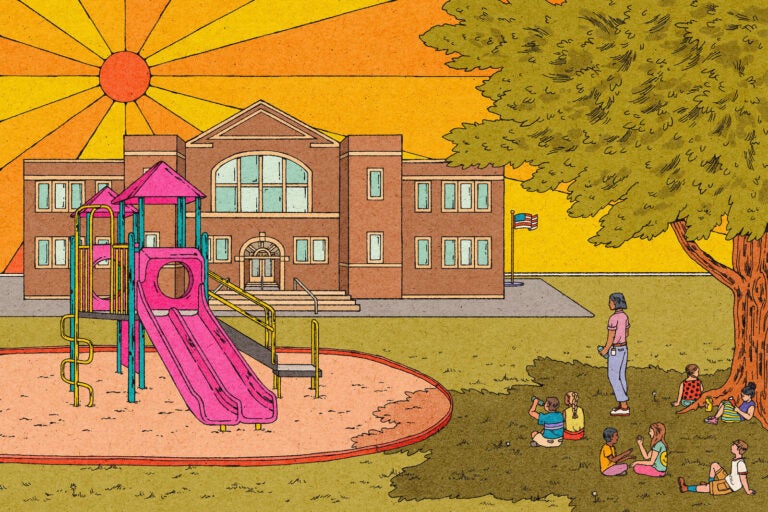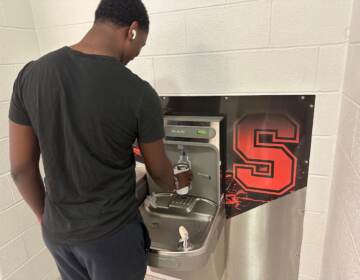Extreme heat is cutting into recess for kids. Experts say that’s a problem

(Kaitlin Brito for NPR)
This week, sweltering heat has forced districts around the country – up and down the East coast and across the Midwest – to close schools early or switch to virtual learning.
Even more schools canceled outdoor activities and after-school sports.
The term “heat recess” has entered teachers’ vocabularies recently, overtaking the long-held “rainy day recess” as a sign of a tough day ahead. Both call for the same thing: indoor activities, more supervision and antsy kids.
Recess, and outdoor activities like physical education, provide young kids with a much needed break during the school day. Research says it’s important for students to let off some energy in order to come back to the classroom more focused and ready to concentrate.
“Recess also is important in children developing their social skills,” Melinda Bossenmeyer, a veteran educator and recess advocate says. “They learn how to work with each other and to make compromises.”
Bossenmeyer was a teacher and administrator in Marietta, Calif., for over 30 years. Her school sits inland from Los Angeles, closer to Palm Desert. The temperatures are consistently hot: She says temperatures often hit 100 degrees in the first month of school.
But her kids still needed to go outside, so she challenged herself: “How can we make that outside environment more conducive to children being successful and enjoying the experience?”
Shade, water stations and misters were her preferred approach. But for some districts, spending money isn’t an option. Instead, educators are having to get creative.
In Nashville, temperatures have consistently been around 90 degrees since classes began in early August. To cope one school played around with the recess schedule. Rather than one 30-minute recess, the school shifted to one 20-minute, and one 10-minute, break. If high temperatures continue, the next step is to shift recess to the morning, when temperatures are lower.
In other places around the country, schools are keeping students inside to stay cool, but not all schools have AC inside to fall back on.
Lack of reliable air conditioning is a problem nationwide. A 2020 study from the U.S. Government Accountability Office found that an estimated 41% of districts needed to update or replace HVAC systems in at least half their schools.
In Oklahoma, temperatures have been above 100. At Macomb Elementary School, about 50 miles southeast of Oklahoma City, teachers take turns holding a sprinkler in the school courtyard during recess while the kids run through it.
James Hancock, who teaches third and fourth grade girls’ PE, has been holding gym class in a regular classroom. The girls run back and forth, playing a Simon Says-type game called “Ships and Sailors.”
That’s because the school’s gym doesn’t have air conditioning.
“Whatever the heat index is outside,” he says, “you can add about 10 degrees to inside the gym.”
Beth Wallis of StateImpact Oklahoma contributed reporting.
9(MDAzMzI1ODY3MDEyMzkzOTE3NjIxNDg3MQ001))




